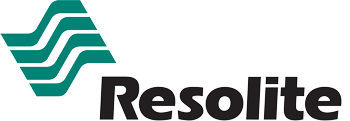Installing fiberglass reinforced polymer (FRP) panels on RV exterior walls provides a durable, weather-resistant surface that improves the functionality and look of your recreational vehicle fleet. Getting the installation right keeps your vehicles on the road longer and keeps your customers happy. Here’s a detailed guide from Stabilit America on how to properly install your Versalit exterior fiberglass wall and roof panels.
Preparing for Installation
The first step when you are ready to start installing your Stabilit FRP panels on your RV sets you up for a smooth process. Don’t just jump right in—make sure everything is ready. Your tools should be on hand, and you might want to create a checklist. Additionally, you’ll want to make sure that your workspace is clean and dry to prevent any problems when you start the adhesion process. Paying close attention here helps you get long-lasting results.
- Gathering Materials: Gather all of the necessary tools and materials before you start and put them in the right place. Don’t forget that this includes safety gear like gloves and goggles to protect against dust and debris.
- Workspace Preparation: Clean your workspace thoroughly. Remove any debris, dust, or moisture that might compromise the adhesive’s effectiveness or the panel’s integrity.
- Tool Check: Make sure each of your tools is in good working order. A blunt saw or an unevenly notched trowel can cause some serious issues during the cutting and application phases, and it may even damage the panels, which would result in wasted materials.
A well-prepared start leads to a successful installation of your Versalit exterior fiberglass wall panels, setting the tone for the task ahead.
Measuring and Cutting the Panels
Accurate measurement and precise cutting are extremely important for the successful installation of the FRP panels on your RV. Start by carefully measuring the installation area to figure out the exact size of the panels required. Make sure you allow for a quarter-inch gap around the perimeter of each panel to accommodate any expansion from temperature changes.
- Taking Measurements: Measure the height and width of the installation area. Use a tape measure for accuracy and note down these measurements.
- Panel Marking: Transfer these measurements onto your FRP panels, clearly marking where you need to make the cuts. Make sure all of your markings are visible and straight for accurate cutting.
- Cutting the Panels: Use a table saw or circular saw to cut the panels along your markings. Keep the panel face up to avoid surface damage and ensure a clean, sharp edge.
Once you’re done, check each cut panel to make sure it fits the area on your RV before starting to do anything with the adhesive application. Taking the time to do this extra step will prevent the hassle of adjustments mid-installation.
Applying Adhesive
Proper adhesive application is what allows your FRP panels to withstand the rigors of the road. Choose an adhesive that offers moisture resistance to handle the external conditions of an RV. The goal is to create a reliable bond that stands up to both movement and weather.
- Choosing Adhesive: Select a high-quality, moisture-resistant adhesive that is compatible with FRP panels to get optimal performance outdoors.
- Application Technique: Spread the adhesive evenly across the panel’s backside using a notched trowel. The notches help create a uniform pattern that improves the grip between the wall and the panel.
- Coverage Check: Make sure you get complete coverage and don’t leave any gaps to prevent any weak points that might lead to panel separation or water ingress later on.
After applying the adhesive, give it some time to become tacky, as this improves the bond strength when the panels are applied.
Installing the Panels
How you install FRP panels requires precision and attention to detail so that your exterior wall panels are aligned and securely attached. Position the panel on the prepped surface, applying firm, even pressure to create a strong bond.
- Positioning: Align the panel carefully with your marked measurements. Make sure it fits perfectly within the designated space.
- Securing the Panel: Firmly press the panel against the wall using a laminate roller to smooth it down and eliminate any air bubbles.
- Observing Expansion Gaps: Stay vigilant about maintaining the necessary expansion gaps. These gaps are extremely important because they allow the panels to expand and contract with temperature changes without warping or buckling.
Once all of your exterior wall panels are installed, do a walk around and inspect each one to check for loose edges or visible gaps.
Sealing and Finishing
Finalizing the installation with proper sealing and finishing touches protects the integrity of your FRP panels and extends their lifespan. This step helps safeguard against moisture and keeps the panels functional in all weather conditions.
- Applying Sealant: Use a high-quality silicone sealant around all of the edges and within expansion gaps to create a waterproof barrier.
- Additional Waterproofing: In areas particularly susceptible to water exposure, apply an extra layer of waterproofing sealant to fortify the panels against moisture ingress.
- Visual Inspection: After sealing, check the entire installation for any missed spots or potential vulnerabilities that could lead to issues in the future.
Effective sealing prevents moisture damage and reinforces the overall structure.
Maintaining and Cleaning
Regular maintenance is going to be necessary to keep the newly installed FRP panels in pristine condition. This helps preserve their appearance and keeps them performing their protective role effectively.
- Routine Cleaning: Use mild detergents and a soft cloth or sponge to clean the panels. Regular cleaning prevents dirt build-up.
- Addressing Tough Stains: For more stubborn stains, use specialized FRP cleaners that tackle grease and other residues without damaging the surface.
- Inspect Regularly: Periodically inspect the panels for any signs of wear or damage. Addressing these issues can prevent larger problems down the line.
Proper maintenance of your Versalit exterior fiberglass wall panels helps extend their life and keeps them functioning under harsh road conditions. Regular care is straightforward and helps avoid costly repairs for your fleet.

Ready to Upgrade Your RV? Choose Versalit Panels Today!
Ready to enhance the durability and look of your RV fleet? Versalit exterior fiberglass panels and fiberglass roof panels offer the strength, style, and sustainability you need. Make sure your RV is equipped to handle any adventure. Contact Stabilit America now to find out more about our innovative solutions and start your journey toward a stronger, more stylish RV.


